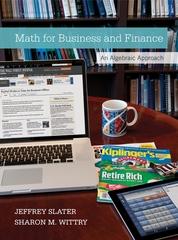

9. Suppose there are two types of news company: 50% are Real News and 50% are Fake News. Real News companies have a marginal cost of $2.10 to produce an article. Fake News companies have a marginal cost of $1 to produce an article (requires no research, because the story is inaccurate). There are 1000 potential customers who buy at most one news article. Customers value Real News at $3 an article and Fake News at $1 an article. Customers cannot tell if a news article is Real News or Fake News, but the news company knows if it is real or fake. The news companies are perfectly competitive. [Hint: If you are uncertain about how prices are set with the perfectly competitive firms the equilibrium outcome will be the same as the following game. A customer makes a take-it- or-leave-it offer of some price (not knowing the firms type: real or fake}. The rm's type is then realized with probability half each. Given the rm's type and the price offered, the news company will decide to accept or refuse the offer. Then payoffs will be realized.] a. (Zpt) Which types of news gets sold in equilibrium? What is the equilibrium price? b. (Zpt) The government believes there should be more accurate news sold. They also cannot tell which news is accurate or not. They decide to subsidize all news articles by 10c, giving a company 10c for each news article sold. i. With this subsidy which types of news get sold in equilibrium? What is the equilibrium price? (0.5pt} ii. Who are the winners and losers from the government subsidy policy? (winner/Iosero effect) (0.5pt) Government Revenues: Customers: Fake News: Real News: iii. What is the effect on social surplus of the government subsidy? Show your working, i.e., calculate social surplus with and without subsidies don't forget that government revenues need to be included. (0.5pt) iv. Assuming we don't like Fake News, give one argument for and one argument against the government subsidy in light of your answers to (ii) and (iii) above. (0.5pt) For: Against: c. (1pt) Instead of providing a subsidy the government allows news companies to choose if they want to get a Trust Certificate for their company. Any news company can get one. However, if you have a Trust Certificate and someone finds an inaccuracy in a news article the government fines you an amount $X. For each news article sold, the probability of an inaccuracy being found for Real news is 0. The probability of an inaccuracy being found in Fake news is 0.5. i. What is the smallest value of X for there to be an equilibrium where news companies get the Trust Certificate if and only if they are real news companies? (0.5pts) ii. Assuming we don't like Fake news, why might the Trust Certificate system be preferred to the subsidy? (0.5pt)










